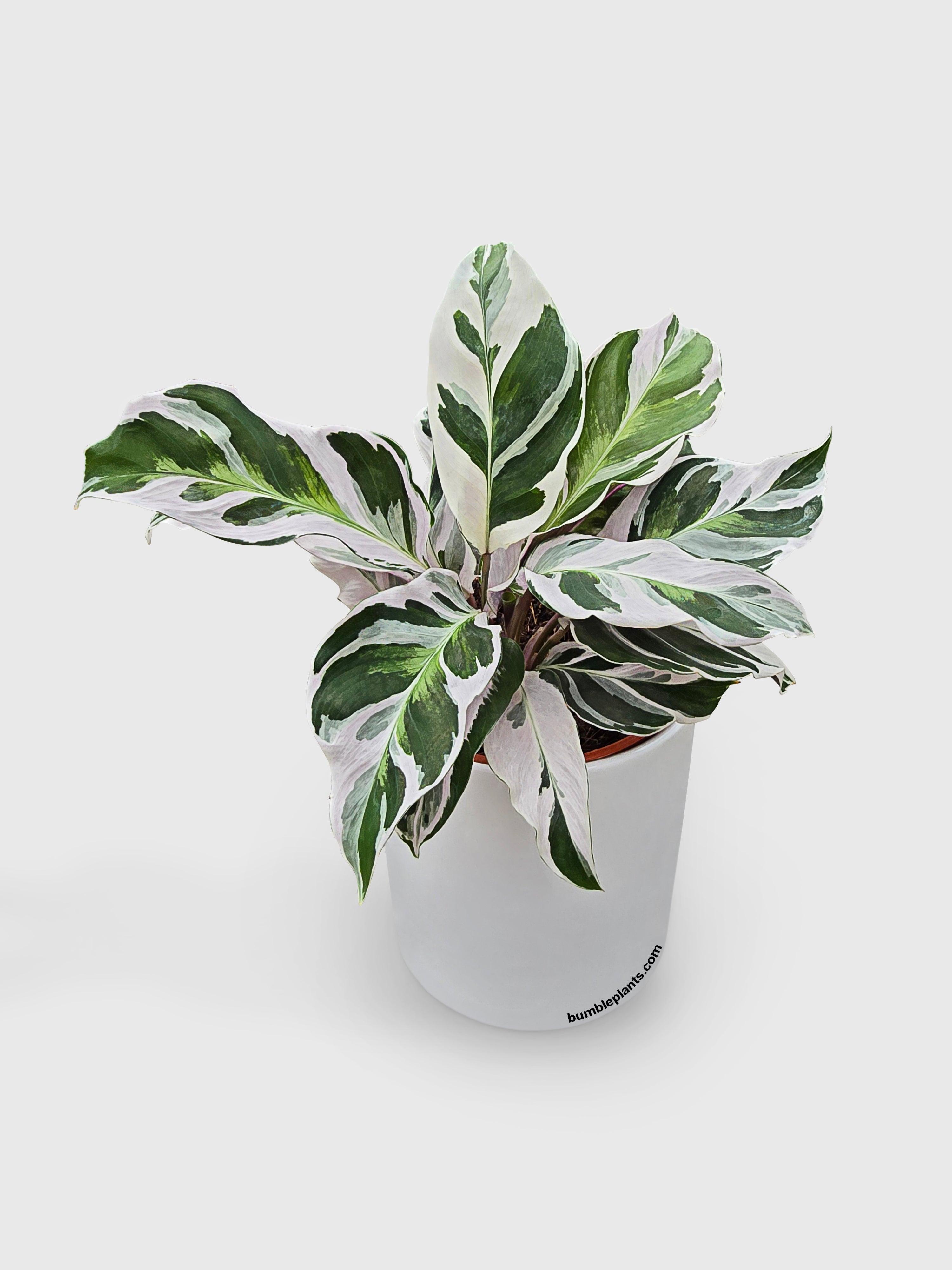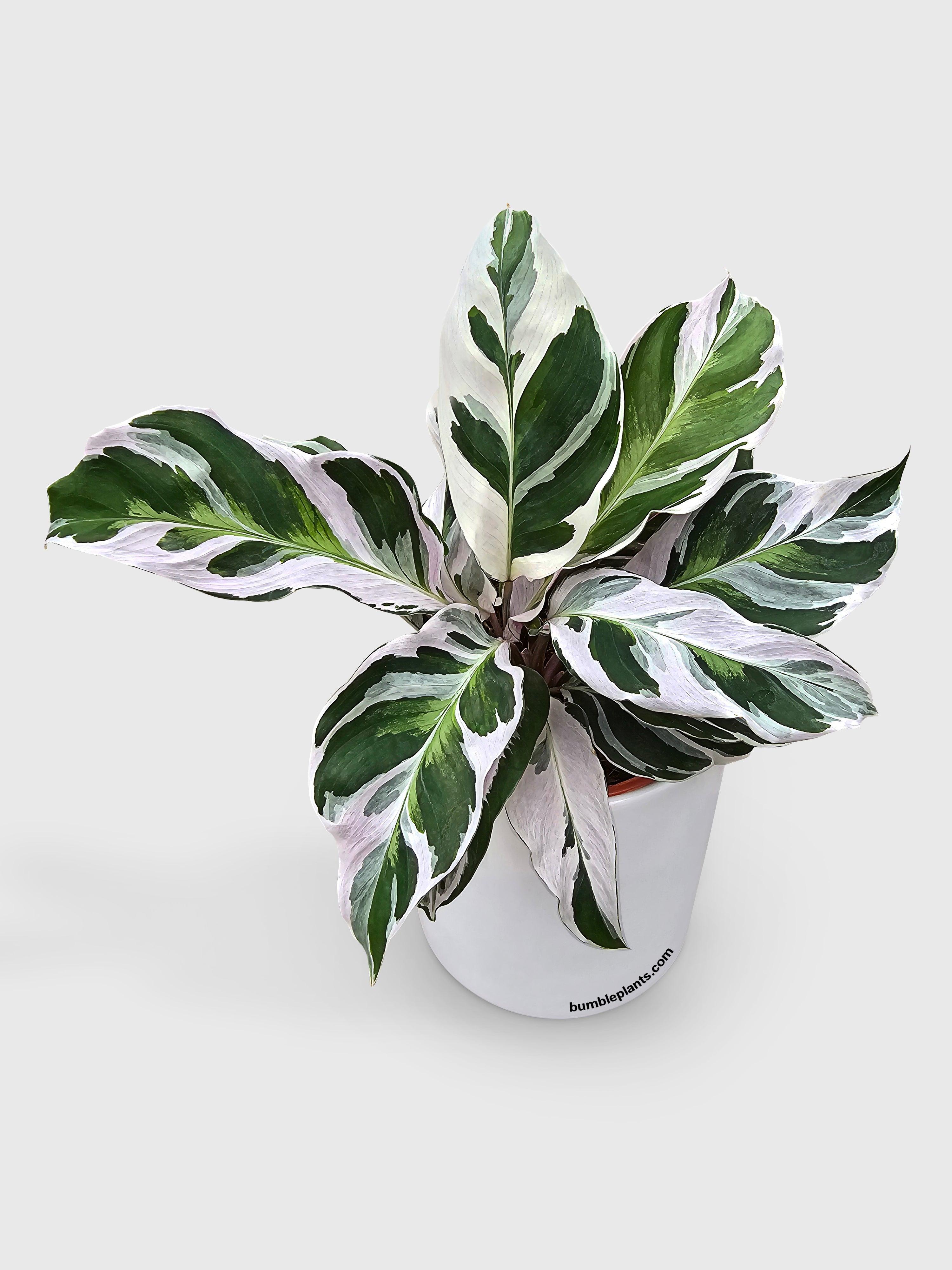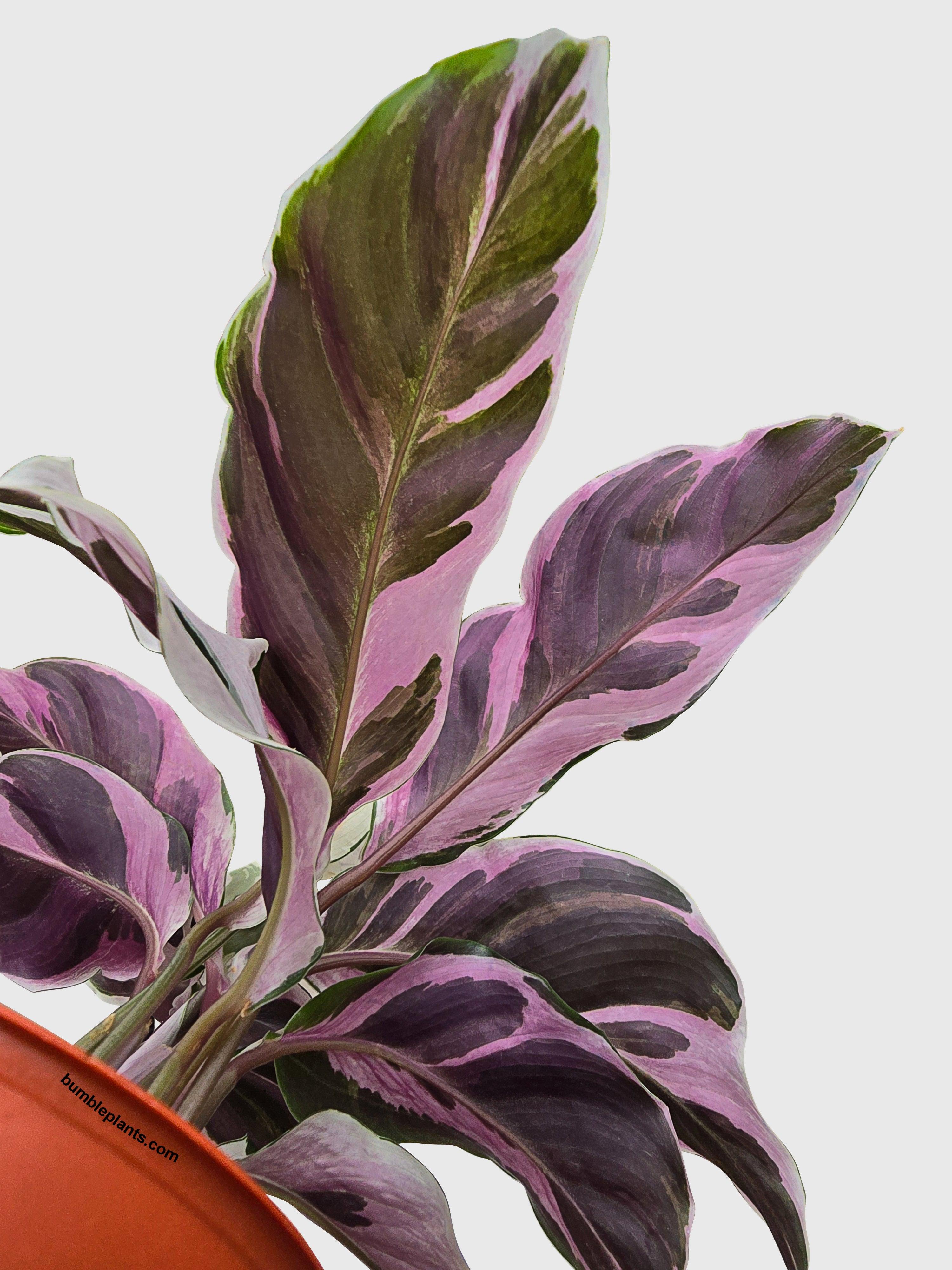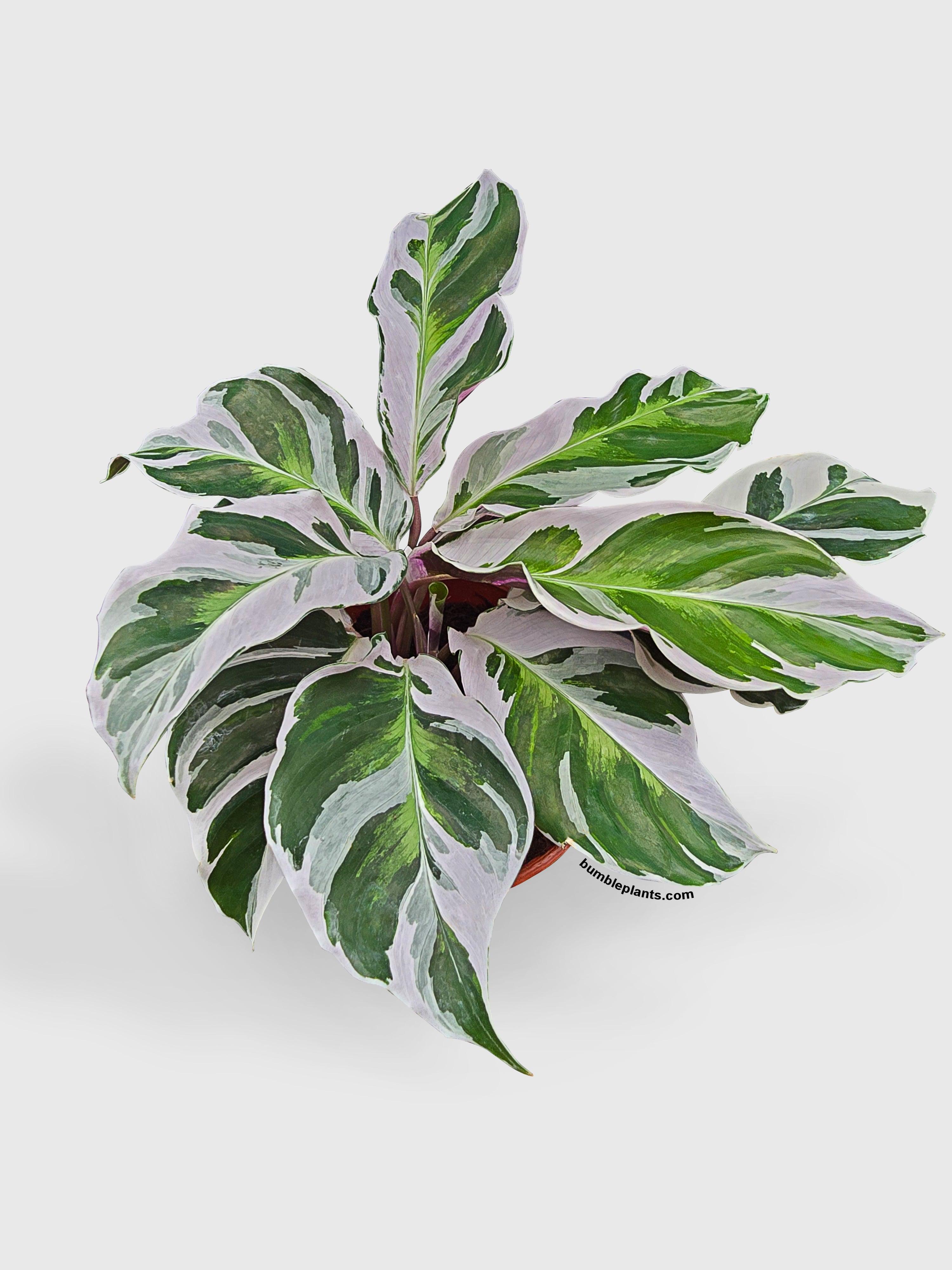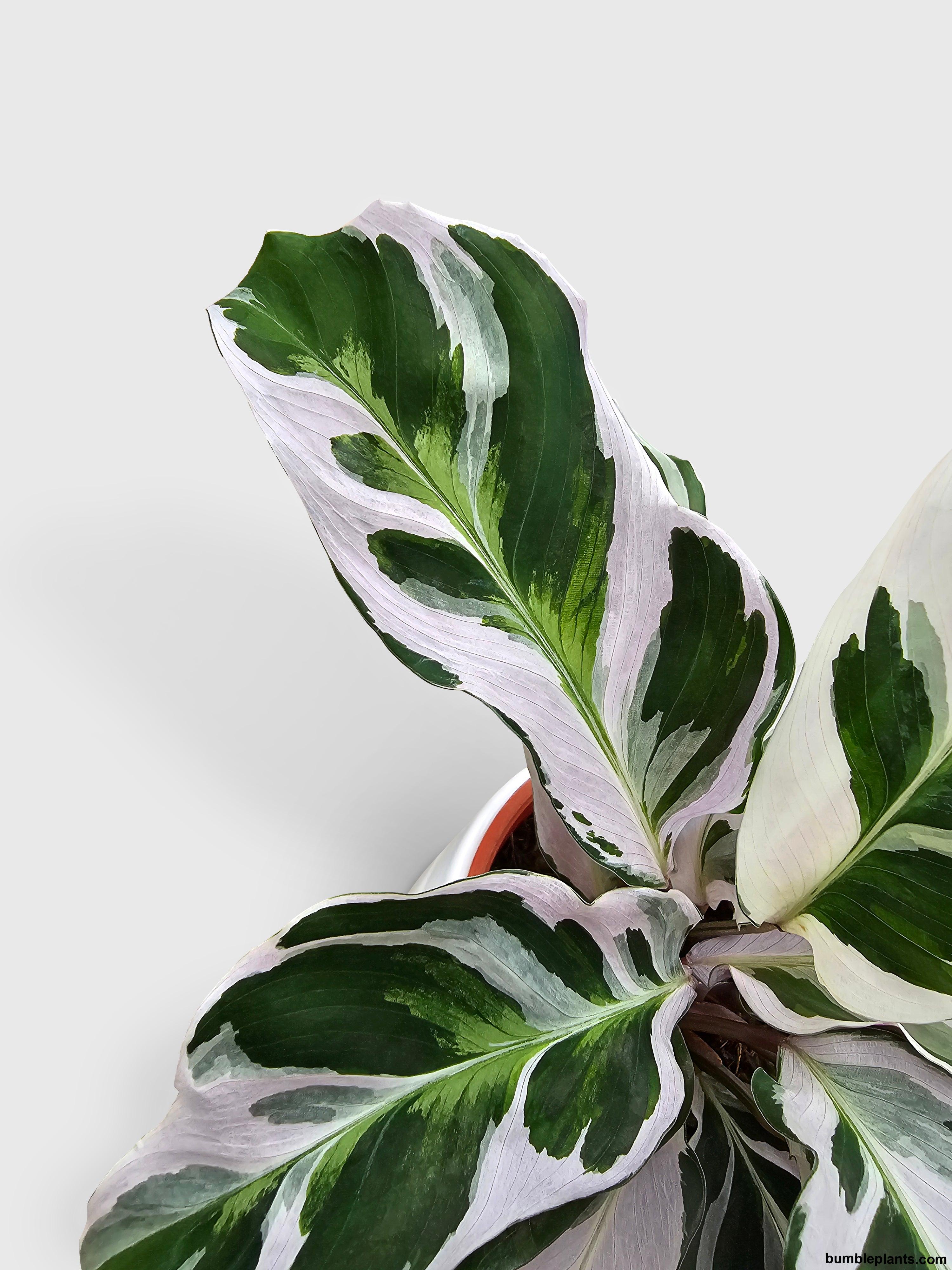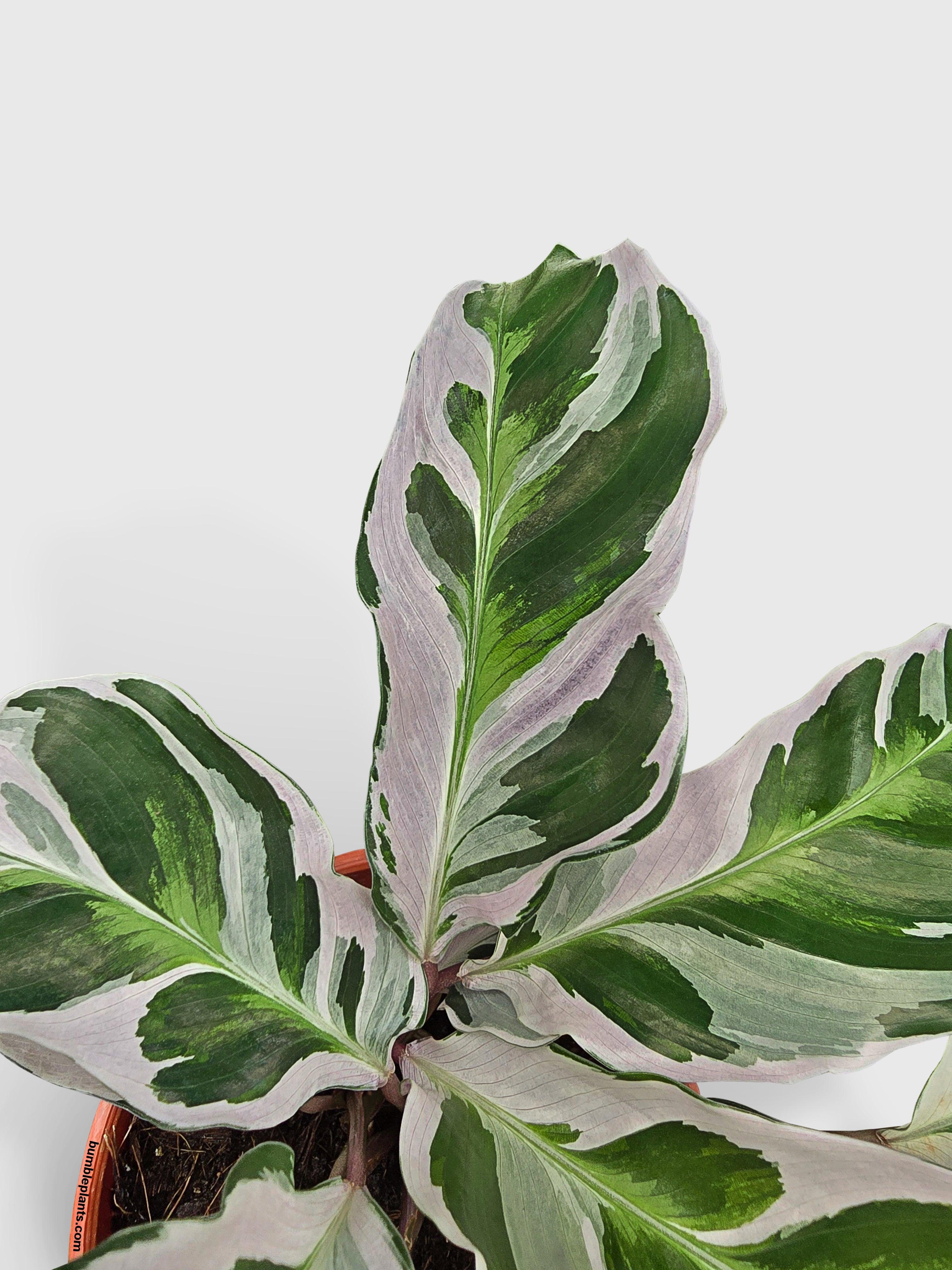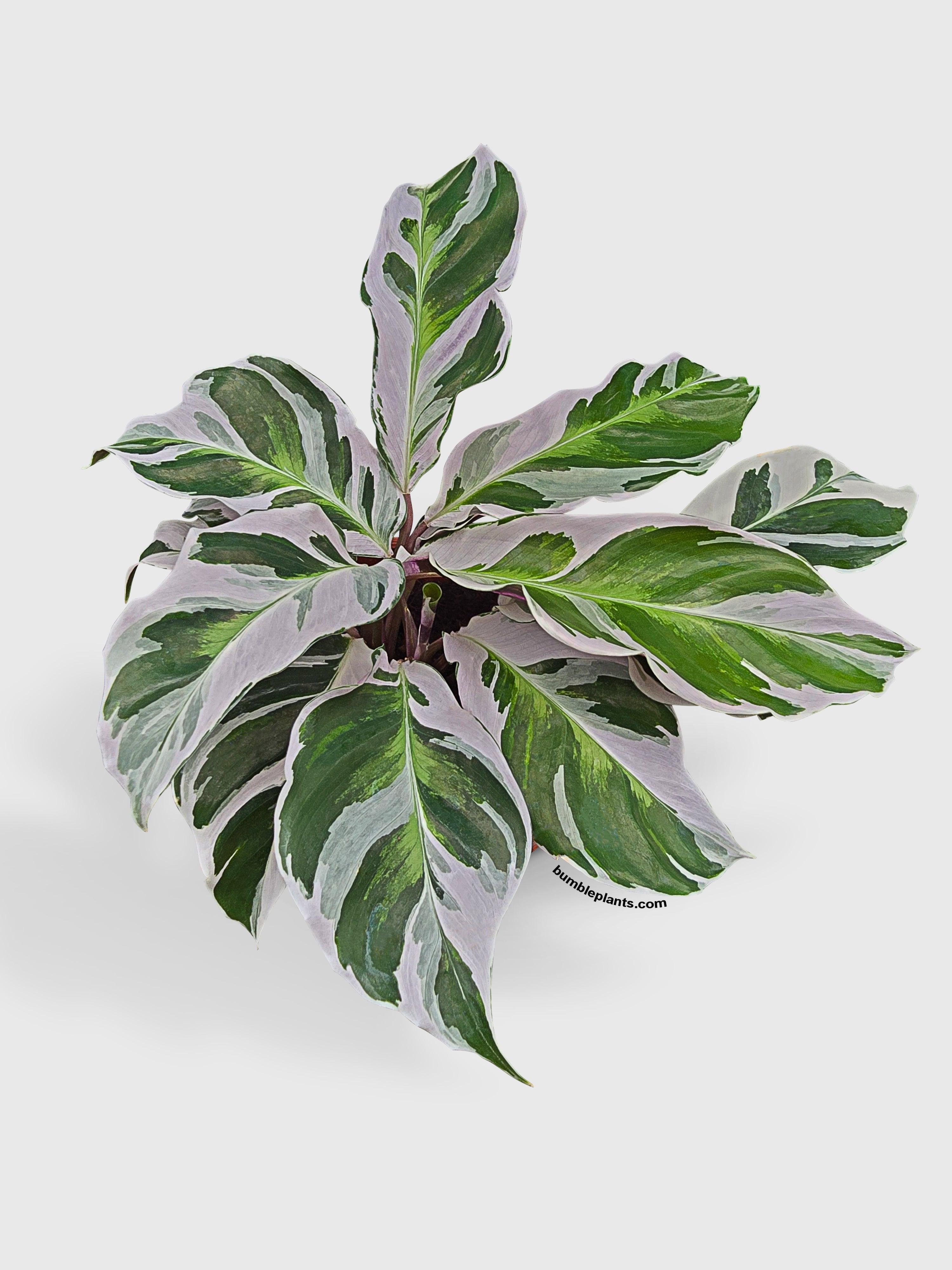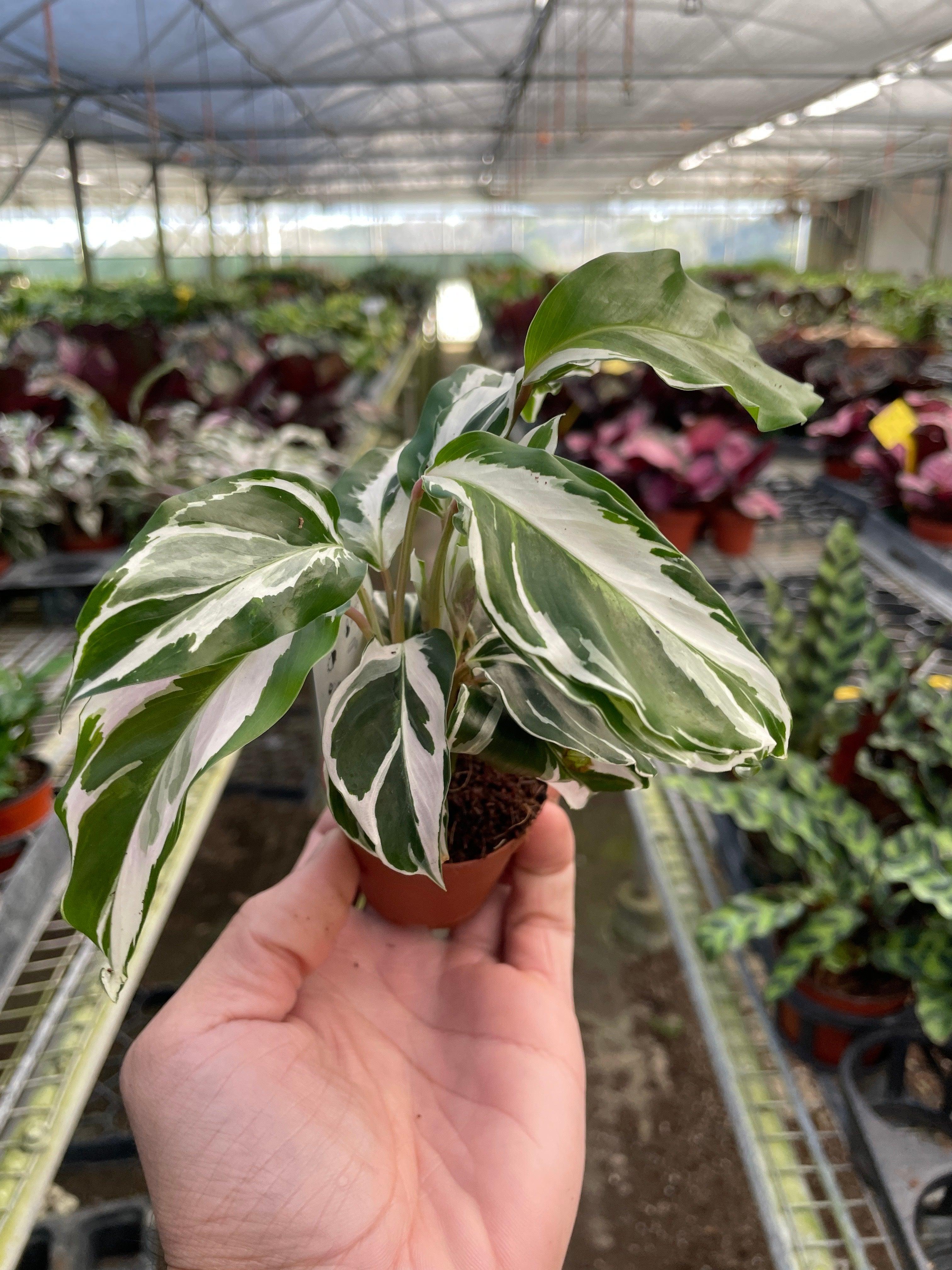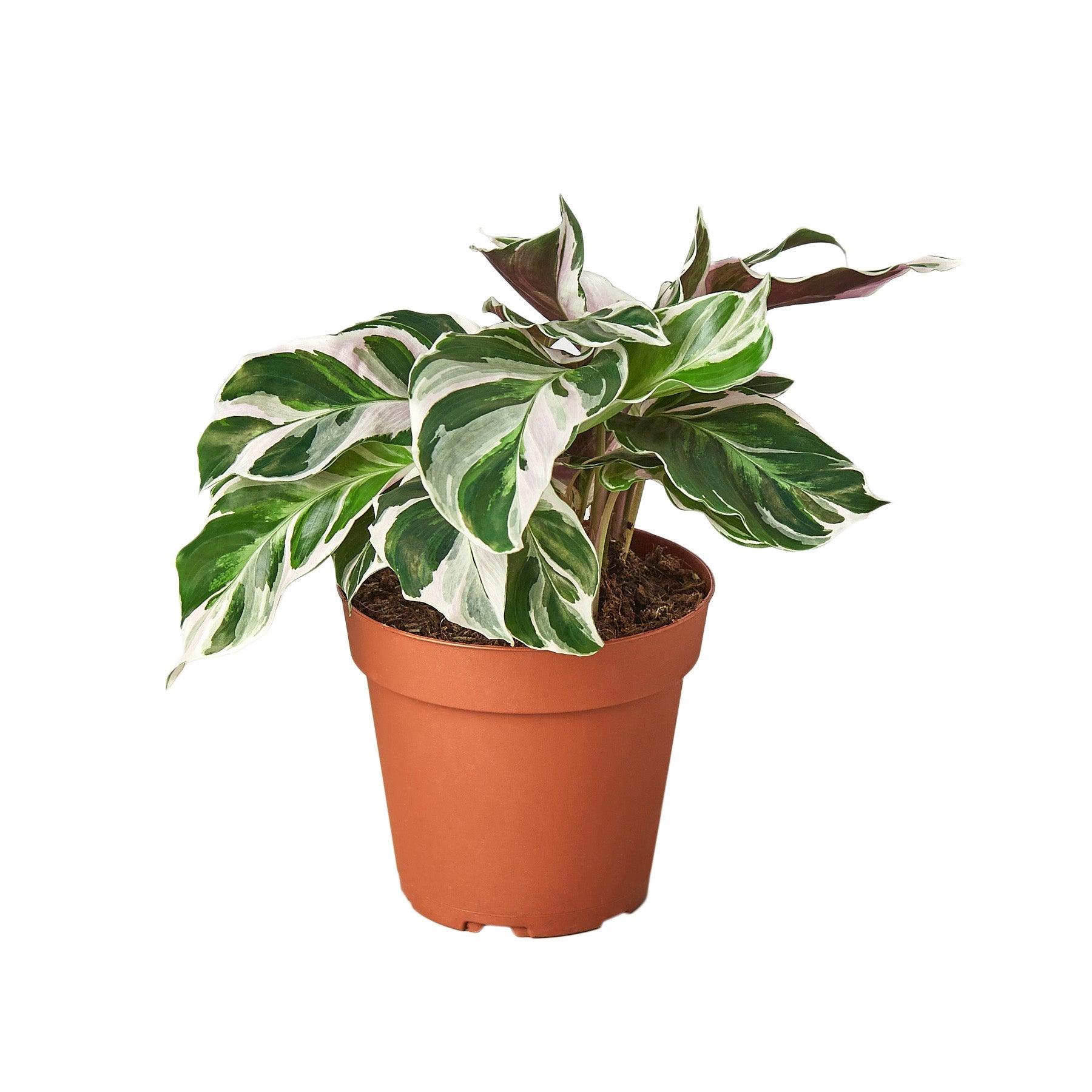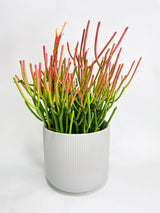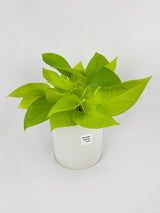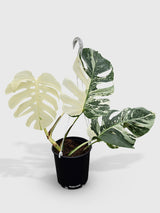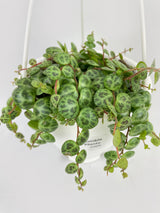Calathea White Fusion – A Stunning Statement Plant
You will receive ONE (1) 4" Calathea White Fusion in a nursery pot, unless stated otherwise. Refer to our FAQ for more information.
Calathea White Fusion is one of the most striking houseplants, featuring marbled white and green variegated leaves with purple undersides. Its unique foliage and air-purifying qualities make it a favorite among plant lovers. As a prayer plant, its leaves gracefully move throughout the day, responding to light changes. Pet-friendly and visually stunning, Calathea White Fusion is a must-have for any indoor plant collection.
How to Care for Calathea White Fusion
Watering
Keep the soil consistently moist but not soggy. Water when the top 1-2 inches of soil feel dry, using filtered or distilled water to prevent browning leaf edges.
Sunlight
Thrives in bright, indirect light. Avoid direct sunlight, as it can scorch the delicate variegated leaves. It can tolerate lower light, but brighter conditions enhance its beautiful colors.
Temperature
Prefers temperatures between 65°F-80°F (18°C-27°C). Protect from cold drafts, air conditioning, and sudden temperature changes.
Humidity
Requires high humidity (60% or more). Use a humidifier, mist the leaves, or place a pebble tray with water nearby to maintain humidity levels.
Toxicity
Calathea White Fusion is non-toxic to pets and humans, making it a safe choice for homes with cats, dogs, and children.
Fertilizer
Feed with a balanced liquid fertilizer once a month during the growing season (spring and summer). Reduce feeding in fall and winter.
Growth Rate
A moderate grower that can reach up to 2 feet tall indoors with proper care.
Pruning
Trim any brown, damaged, or yellow leaves to encourage healthy growth and maintain a fresh appearance.
Propagation
Best propagated through division during repotting. Gently separate a healthy section with roots and plant it in fresh soil.
Soil Mix
Prefers a well-draining, moisture-retentive soil mix. A blend of peat moss, perlite, and potting soil works best.
Repotting
Repot every 1-2 years or when the plant becomes root-bound. Use a pot with proper drainage to support healthy root growth.
Common Pests
Susceptible to spider mites, thrips, and fungus gnats. Wipe leaves regularly and treat infestations with neem oil or insecticidal soap.
Common Problems
-
Crispy or brown leaf edges – Caused by low humidity or chemicals in tap water. Increase humidity and use distilled or filtered water.
-
Drooping leaves – Often due to underwatering. Check the soil moisture and adjust watering as needed.
-
Yellowing leaves – Usually a sign of overwatering or poor drainage. Let the soil dry slightly between waterings.
